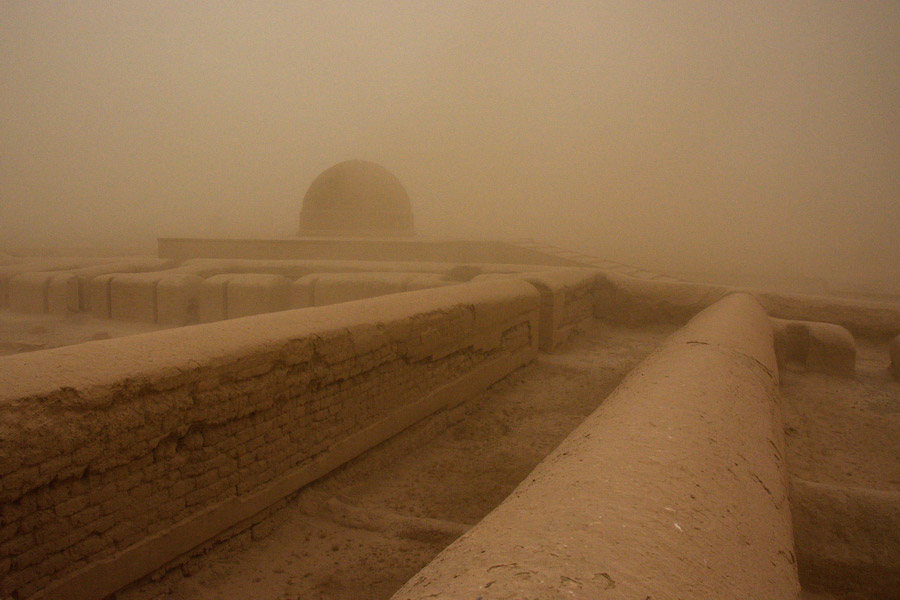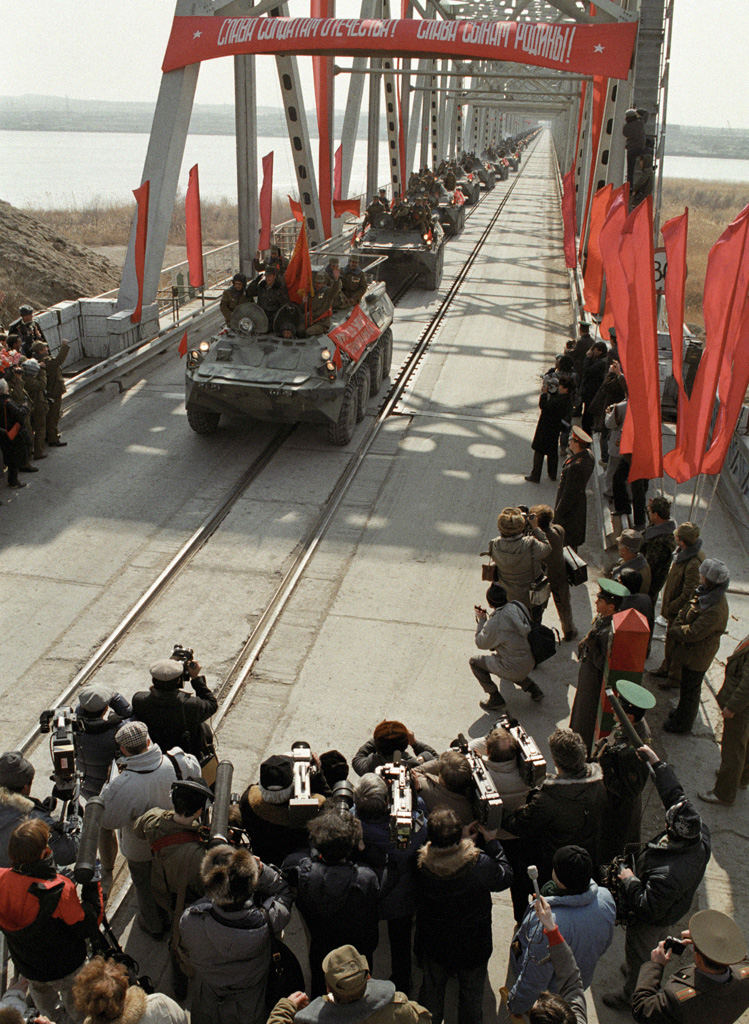
Credit: A. Solomonov / А. Соломонов/ Creative Commons Attribution-Share Alike 3.0
At Tashkent, the Uzbekistan capital we board an amazing Soviet era YAK 40 (Yakoliv) for Termez. The plane smells of Vodka and has a public bus feel to it. No need to be careful about overhead luggage falling on to your heads, the Yak 40 has its total luggage space (both hand and check in baggage) at the back. You enter in from the tail. The pilot enters from the back after all passengers have boarded, you stand up in respect and sit down only after he has taken to his cabin.
I am a little tensed up, but ease up when I see an Uzbek women sitting across the aisle smiling and dozing. The Yakoliv has taken its evening dose of Vodka for it has a rather drunken way of taking to the airstrip and I joke with Thierry (my professor whom I am accompanying) about the need for checking the tyre pressures. He smiles, he has done this trip innumerable times
It has been a tiring flight from Paris to Tashkent and I doze off to wake up as we land with a start at Termez. I am relieved to get out and breathe in the evening air. The waiting hall welcomes us with a Mumbai film starring Sunil Shetty, Sharmila Tagore and Akshay Kumar, all of whom are speaking flawless, highly emotionally charged Uzbek.
Sanjar our right hand man at Termez speaks perfect Yankee English. He was part of student exchange programme in the USA during the era of Uzbek USA friendship (an immediate post Soviet Union period that did not last very long). He tells me that his wife, mother and sister are addicts of “Mahabharatha” & “Krishna” highly popular soaps on Uzbek state television. Amitabh Bachan, Mithun Chakrabarty he pronounces with an Uzbek accent and the girls they are in love with Shahrukh Khan!
My Indian passport attracts a lot of friendly attention at the airport. A lot of Indians in films and on television but never a real Indian!
At Termez we are being put up at the United Nations High Commissioner for Refugees (UNHCR) centre. This centre owes its existence to the strategic location of Termez. It was from here that the Soviet Union launched its Afghan invasion.
Termez has an amusing Soviet era hang over. But looks alone are misleading for Termez is actually a long and illustrious epic story. A veritable chameleon city, changing its role, religion, alliance and even location! This extraordinary character of Termez is no accident, it owes its existence to an island in the mighty river, “Amu Darya”.
The Amu Darya (Oxus) has its source in the mighty Hindukush, traverses the high Pamir plateaus of Tajikistan, flows to form the frontier between Afghanistan and Uzbekistan, continues to flow to define the ancient frontiers between the Persian and the Turk worlds, feeds the Oasis of Khorzem and finally disappears into Onthe Aral Sea after a 1437 km long journey.
On this river that is over a kilometre in width an island provided a privileged access point. This island alone played the defining role for the south north silk route that came up from Afghanistan through Bamiyan, Mazar e Sharif, crossing the mighty Amu Darya at Termez and then bifurcating to move on further north.
So depending on the epoch and with a little imagination one can visualise at Termez, Buddhist monks discussing philosophy with Mughal conquerors, Greek guards seeing the arrival of Soviet tanks, traders from Bacteria with double humped Bacterian camels negotiating with AK 47 clad Afghan traders. The bridge across the mighty Oxus at Termez, is interestingly called, “The Bridge of Friendship” All along recent history this bridge became the border and the border re-became the bridge. And even though present day Termez may have only its nondescript character to offer, it was here in the recent history of this land that the British and Soviet empires faced each other in dangerous strategic game plans, and it was finally here that the Soviet empire found the permanent frontier they had been searching for.. And it was here on these famed northern banks that I was part of a team working on the restoration of an ancient Buddhist monastery of Fayaz Tepa.
Beyond the Amu Darya, far into the horizon, in the haze of an approaching winter with the winds that raise the dust I can make out the outlines of Afghanistan. The Afghan banks of the Amu Darya look greener and the mountains rise into the sky, both defying the times. This silent haze is interrupted by the occasional rat a tat of machine gun fire, spats between the Uzbek army and their Afghan counterparts, awkward remains of a recent past. It was in 1979, just 27 years ago that the Soviet army launched its Afghan invasion from Termez. The now calm Termez airport would have been bristling with Soviet military and transport aircraft. And it was even more post 9/11 that the allied forces launched their so called chase of the Taliban and Bin Laden from Termez. A task still far from accomplished. The German armed forces in Afghanistan still receive logistic support from the Termez airport, an airplane marked “Bundeslika Republic” that seems permanently stationed at the airport bears testimony to that.
Military transport aircrafts and helicopters are lined outside a huge aircraft shelter, as if waiting for the times to change, for this uncomfortable calm to turn to turmoil.
I was in Termez by sheer chance as one of my professors had taken unwell and I was brough onboard at the last minute, as part of an Expert Mission on the Restoration works being carried out on the Buddhist Monastery of Fayaz Tepa. History has no respect for present day geo strategies and Fayaz Tepa, on the ancient silk route lies just outside the electrified barb wired no mans land (international zone) on the Uzbek side. Remains of army radars on raised mounds just next to the ancient Buddhist site are no mere coincidence but a result of forces that are as old as the island on the Amu Darya and these forces are more than active in the present age. An ancient Buddhist monastery and high security military radars, aloof neighbours in a peaceful coexistence. These mounds also happen to be the best view-point for the site. Not very far from Fayaz Tepa is another archaeological site well within today’s no mans land, an international team carries out excavations there. No photos of the Afghan border, of the antennas, of the barbed wired, of the no mans land.
We meet the Uzbek archaeologist that continues to excavate Fayaz Tepa and comes up with new finds. He has found pottery with the Pali script on it and is excited about the ‘Indian’ who is coming, he asks me to read it for him, he is disappointed when, I tell him that I cannot. He has made some finds that seriously question the date to which this monastery is presently assigned, it could actually be dated significantly earlier, making it a BC dated monastery. But archaeology is a highly meticulous science and it will be some time before he can even officially table such a probability.
Our other colleague, a French architect of Polish origin posted here full time speaks of Afghanistan and Mazar e Sharif. With his UN diplomat identity card and the Toyota four-wheel drive that takes him less than two hours to get there, he talks of the impossible market that is Mazar e Sharif. Where everything is for sale; tanks, rocket launchers you name it, and somebody will find one for you. The office with whom we are doing this expert mission has a project there and soil samples from Afghanistan have been brought over for testing. Adobe bricks have to be fabricated and tested. I carry out a battery of simple tests on Afghan soil at 2 kilometres from Afghan border inside Uzbekistan and at a few 100 meters from the barbed wire fence.
It is the last day at Termez and I arrive on site to find strong cold wind blowing across laden with dust. Conditions are so bad that work is stopped and recently restored walls covered with cloth that is tied down against the wind.
Noticing my grimacing face expression the local contractor yells across the wind, “Afghani, the wind is called Afghani” The Afghani is the furious cold wind, laden with dust that blows down the Afghan mountains, across the Amu Darya and sweeps up the plains on the Uzbek side to make life impossible.
I had just tested Afghan soil the earlier day and found just one of them good enough for the fabrication of adobes and today it is the cold wind full of Afghan air and fine dust that is testing me.
We pack and return to the UNHCR centre. I have some free time thanks to the Afghani and use it to talk to some of the staff hanging around at the UNHCR centre.
Termez is the launching pad for convoys of the United Nations Food Programme that supplies food to the war affected Afghanistan. I have got friendly with the skeletal staff that operates from here. At the height of the conflicts this centre had seen busier days. One staff member of the Food Programme tells me that he has something to show me and fishes out what resembles an expensive biscuit packet. A closer look reveals glucose biscuits packed in a neat cream coloured pack, with a bright Indian flag printed on it and a prominent message saying, “Gift from the people of India”
So Termez saw Buddhist monks, Mughal conquerors, Russian soldiers, served as the frontier between and the bridge across, defined the silk route, was the launching pad of Afghan invasion by the Russians and then by the Western forces, as the logical end of the Soviet empire and believe it or not it also serves as the launching pad of the “Gift from the people of India” to our Afghan brothers.
How closer could I get to Afghanistan? I ask for a glucose biscuit packet to keep for posterity.








